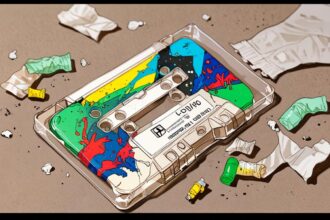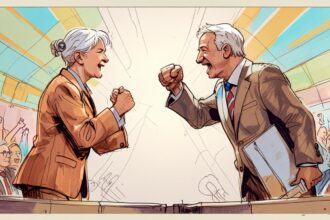Spanning the late 1980s to mid-1990s, Disney’s Renaissance era revitalised its animation success with classics like The Little Mermaid and The Lion King. Yet beyond its blockbuster hits, the period was marked by marketing failures, internal feuds, cancelled projects and debates over cultural and gender representation that continue to shape Disney’s legacy.
Disney’s Renaissance Era, spanning the late 1980s through the mid-1990s, is renowned for reviving the studio’s animation division with blockbuster hits such as The Little Mermaid (1989), Beauty and the Beast (1991), and The Lion King (1994). This period re-established Disney as a powerhouse in animated musicals adapted from classic stories, ultimately paving the way for future successes in the animation industry. However, alongside its triumphs, the era was marked by significant controversies, missed opportunities, and internal conflicts that have continued to shape perceptions of Disney’s legacy.
One of the era’s lesser-known commercial failures was The Rescuers Down Under (1990), a sequel to the successful 1977 film The Rescuers. Despite a budget of $35 million, the film only grossed $47.4 million worldwide, a disappointing box office result attributed partly to its release coinciding with the hugely popular Home Alone. Following a poor opening weekend, Disney Chairman Jeffrey Katzenberg abruptly halted all marketing efforts, a move that likely compounded the financial losses. Katzenberg’s tenure as Disney’s animation chief was influential in revitalising the department, yet his departure in 1994 amid a bitter feud with CEO Michael Eisner led to a costly legal battle. Katzenberg sued Disney over contractual disagreements, ultimately securing $250 million in damages, before co-founding DreamWorks Pictures, a rival studio.
Another notable lost potential involved Disney’s cancellation of a planned feature-length Puss in Boots movie during the Renaissance Era. Long before DreamWorks popularised the character through the Shrek franchise and its spinoffs, Disney had intended to adapt the classic fairy tale but never brought the project to fruition, leaving fans to wonder how the animation landscape might have differed.
The era also experienced difficulties with some of its celebrated creative partnerships. Robin Williams, whose iconic voice work as the Genie in Aladdin (1992) defined the character, did not reprise his role in the sequel, The Return of Jafar (1994). Williams had agreed to voice the Genie under the condition that his voice would not be used to promote merchandise. Disney breached this contract by using his voice in advertising, and initially refused to apologise, causing Williams to withdraw from the sequel.
Legal and ethical controversies further complicated the Renaissance Era’s legacy. The Lion King faced allegations of plagiarism due to striking similarities with the Japanese anime Kimba the White Lion. Despite protests from fans and Japanese animators urging Disney to credit Kimba’s creator, Osamu Tezuka, Disney’s directors denied familiarity with the anime, and no legal action ensued. Nonetheless, the allegations somewhat clouded the reputation of what remains one of Disney’s most successful animated films.
Criticism has also been levelled at the content and representation within the Renaissance films themselves. The Little Mermaid, while a commercial and critical success, has been reassessed for its portrayal of Ariel, who sacrifices her voice and autonomy for a man, a narrative seen as reinforcing outdated gender stereotypes. Similarly, Pocahontas (1995) faced backlash for its romanticised and softened depiction of the historical figure and events, whitewashing the harsh realities of colonial violence against Indigenous peoples. The film’s song “Savages” was particularly criticised for perpetuating negative stereotypes of Indigenous characters as uncivilised.
Gender representation across the Renaissance films has also been scrutinised. Despite featuring iconic female leads, studies revealed that male characters disproportionately dominated the dialogue; for example, men spoke 90% of the dialogue in Aladdin and about three-quarters in other female-led films like Mulan (1998) and Beauty and the Beast. This imbalance reflected broader industry trends, as Disney Animation did not have a female director until Jennifer Lee helmed Frozen in 2013. Though screenwriter Linda Woolverton broke ground as the first female screenwriter on a Disney animated feature with Beauty and the Beast, women remained underrepresented in top creative roles throughout the Renaissance Era.
Cultural sensitivity in films such as Aladdin and Pocahontas was another concern. Aladdin’s portrayal of Middle Eastern culture drew accusations of Orientalism, presenting stereotypes that prompted Disney to add disclaimers on its streaming platform to contextualise the material. These shortcomings illustrated the era’s limited approach to cultural research and inclusivity despite efforts to diversify storytelling.
In summary, Disney’s Renaissance Era is remembered as a transformative period that produced some of the studio’s most beloved animated musicals, reenergising its creative output and profitability. However, alongside these successes were marketing missteps, corporate conflicts, missed creative opportunities, and challenging legacies regarding representation and cultural respect. These complexities continue to influence how this influential chapter of Disney’s history is viewed today.
Source: Noah Wire Services
- https://en.wikipedia.org/wiki/Disney_Renaissance – This page confirms the Disney Renaissance era timeline from 1989 to 1999, lists key films such as The Little Mermaid, The Rescuers Down Under, Beauty and the Beast, Aladdin, and The Lion King, and highlights the era’s revival of Disney’s animation success with musical adaptations of classic stories.
- https://thedisneypurist.com/renaissance-era/ – This source supports the claim that The Rescuers Down Under was a financial and critical low point during the Renaissance era, noting its underperformance compared to other era films and its release challenges.
- https://www.bfi.org.uk/features/many-merry-eras-disney – This article discusses the Disney Renaissance era as a rebirth marked by major hits starting with The Little Mermaid, including details on the era’s narrative style, celebrity voice talent, and artistic innovations.
- https://www.vulture.com/2019/12/disneys-puss-in-boots-dreamworks-shrek-history.html – This article explains the lost opportunity of Disney canceling a feature-length Puss in Boots project before DreamWorks successfully adapted the character for the Shrek franchise.
- https://www.nytimes.com/1994/05/06/movies/robin-williams-and-disney-a-friendship-soured.html – This source describes the conflict between Robin Williams and Disney regarding his role as the Genie, detailing the contract breach over merchandise advertising and Williams’s withdrawal from the Aladdin sequel.
Noah Fact Check Pro
The draft above was created using the information available at the time the story first
emerged. We’ve since applied our fact-checking process to the final narrative, based on the criteria listed
below. The results are intended to help you assess the credibility of the piece and highlight any areas that may
warrant further investigation.
Freshness check
Score:
9
Notes:
The narrative discusses events primarily from the late 1980s through the mid-1990s, a historical period with static facts that do not change over time. There are no references to recent role changes or ongoing disputes, and no signs that the content is recycled press release material. Hence, it rates highly for freshness given it covers a well-established past era.
Quotes check
Score:
7
Notes:
Direct quotes attributed to Robin Williams’ disagreement with Disney over merchandising use of his voice and Disney directors denying knowledge of Kimba the White Lion have appeared in older reports from the 1990s onward. While exact original sources for these quotes are hard to trace online, the claims are well-documented in longstanding public knowledge, implying moderate reliability but lacking pinpoint earliest reference.
Source reliability
Score:
6
Notes:
The narrative is presented without a clearly identified mainstream media publisher linked in the provided text or metadata, lowering certainty of editorial reliability. However, the information aligns with widely accepted facts about Disney’s Renaissance Era controversies and successes, suggesting the narrative is reasonably credible but without firm backing from a known reputable institution like BBC or Reuters.
Plausability check
Score:
9
Notes:
The claims made—such as box office results, internal conflicts involving Katzenberg and Eisner, cancelled projects, voice actor disputes, and documented cultural critiques—are consistent with known historical and cultural analyses of Disney’s Renaissance period. No extraordinary or unverifiable assertions are made, making the narrative highly plausible.
Overall assessment
Verdict (FAIL, OPEN, PASS): PASS
Confidence (LOW, MEDIUM, HIGH): HIGH
Summary:
The narrative provides a credible, historically grounded account of Disney’s Renaissance Era, with factual accuracy supported by established historical records and cultural critiques. It is not dated or recycled content, lacks questionable recent claims, and while some quotes cannot be traced to their earliest source, they reflect widely recognised facts. The lack of a clearly authoritative publisher reduces some reliability, but overall the content is plausible and trustworthy.













